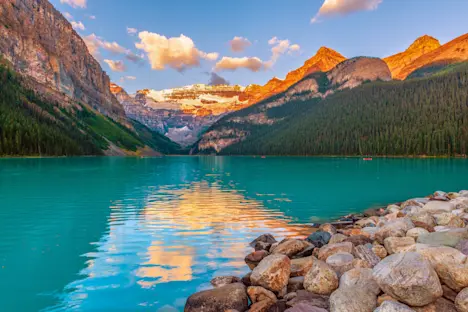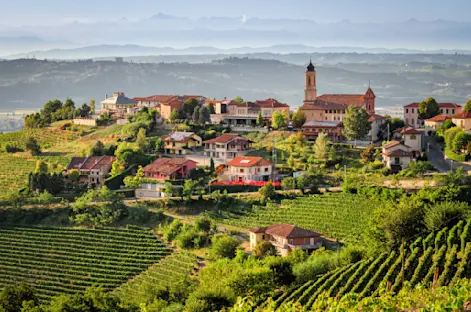From strawberry fairs to truffle hunts, discover how Piedmont’s sagre, vineyards and kitchens celebrate each season’s bounty in the spirit of Slow Living.
Tucked between the Alps and the Po River plain, Piedmont is a land of contrasts. Here, glacial peaks give way to rolling vineyards, rice paddies shimmer under summer light and forests breathe the scent of truffles and chestnuts. This is the birthplace of Slow Food—where time slows to match the simmer of a risotto and the changing seasons dictate what’s on the table.
Each village celebrates its harvests with sagre—community festivals that turn ingredients into occasions. Whether it’s strawberries in spring, hazelnuts in summer or white truffles in autumn, Piedmont’s calendar unfolds as a yearlong feast.
This is the same region at the heart of our Piedmont: The Art of Slow Living journey, where time slows to the rhythm of the land. Guests stay in a restored 17th-century villa overlooking the Langhe hills, explore family-run vineyards and hazelnut groves, join local truffle hunters in the forests of Alba and savor multi-course meals that celebrate the region’s connection between season, soil and soul.

Spring: The Taste of Renewal
When winter’s chill recedes, the Piedmont countryside softens into green. The Langhe hills are stitched with rows of young vines, and in the plains around Vercelli, flooded rice paddies mirror the sky—fields that have sustained generations with risotto.
In markets, spring announces itself in shades of pale green and ivory: asparagus from Santena, tender baby fava beans, and fresh rounds of Toma and Robiola cheeses from alpine pastures. During Easter, towns like Cuneo and Asti hold processions through flower-lined streets, while families gather for agnolotti del plin filled with greens and herbs. In Sommariva Perno, the air is perfumed with strawberries during the Sagra delle Fragole, held each May and June. Long tables spill into the streets, laden with tarts, jams and bowls of fruit served with cream and local Moscato wine.
Beyond the festival tents, trattorias serve tajarin, thin ribbons of golden egg pasta tossed with early herbs—marjoram, sage and wild fennel. The food is simple, but its flavors—fresh, grassy, sweet—mark the year’s first promise of abundance.
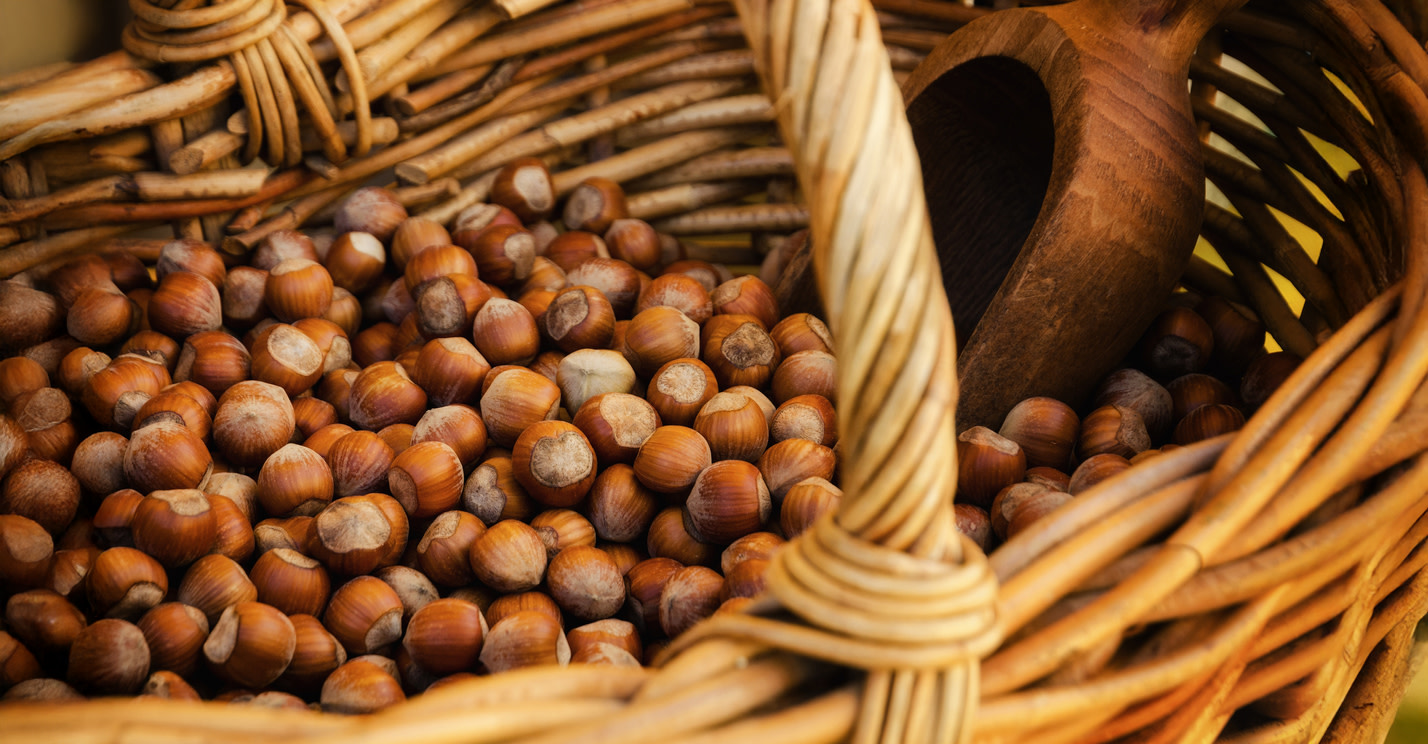
Summer: Hazelnuts, Vineyards and Sunlit Evenings
By midsummer, the Langhe’s hills glow gold with grain and grape leaves. The Tonda Gentile delle Langhe, Piedmont’s prized hazelnut, ripens beneath the sun. In Cortemilia, August’s Sagra della Nocciola honors this small, sweet nut that has shaped Piedmont’s most famous confection—gianduia, the ancestor of Nutella. Villagers parade through cobbled streets, bakers roast hazelnuts in wood-fired ovens and the air fills with the aroma of sugar and caramelized nuts.
Across the region, evenings stretch long and slow. Wine festivals pop up in tiny towns, each pouring the season’s Dolcetto and Barbera, light and lively for summer drinking. In the rice country near Vercelli, early harvests begin under pink-streaked skies, the flooded fields alive with herons.
Menus lean toward freshness: insalata russa with garden vegetables; peperonata, stewed peppers and tomatoes; and sweet peaches in Barbera wine for dessert. Summer in Piedmont is not hurried—it’s an invitation to linger over a glass, to talk, to watch fireflies rise over vineyards.
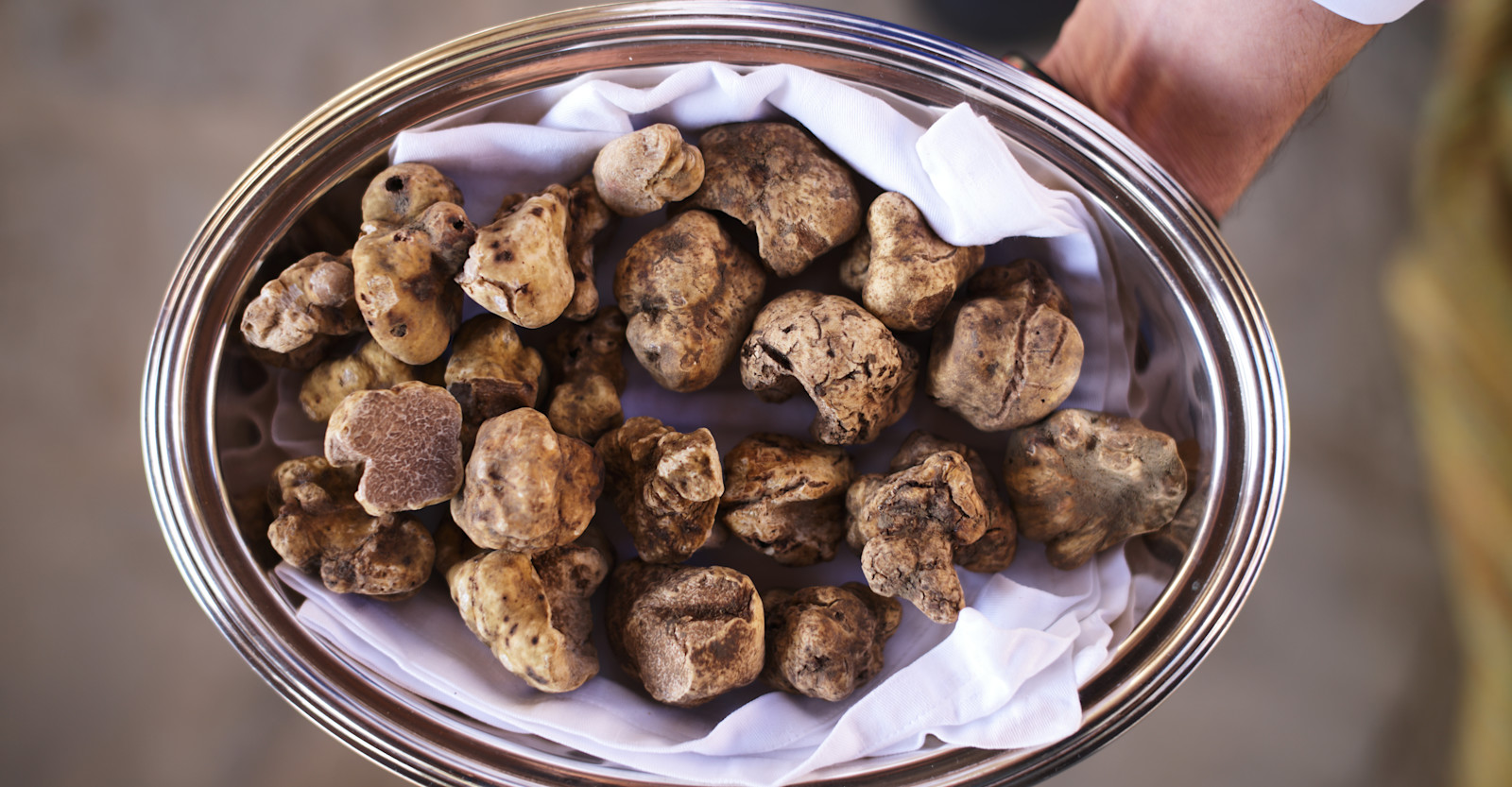
Autumn: The Season of Truffles and Wine
If Tuscany celebrates its grape harvest, Piedmont worships the truffle. When September fades into October, mist settles in the hills around Alba, and the white truffle season begins. This subterranean treasure, hunted with dogs trained from puppyhood, has an aroma so intoxicating that locals call it profumo d’autunno—the scent of autumn.
The Alba International White Truffle Fair, held each year from October through November, is a spectacle of scent and tradition. Stalls brim with truffles nestled in straw, and chefs from across the world arrive to shave them over buttery tagliolini or creamy risotto. The city hums with celebration: wine tastings, medieval parades, concerts and even a donkey race—a playful echo of Siena’s Palio.
Elsewhere in Piedmont, the Erbaluce Grape Festival in Caluso honors a crisp local white, while villages host chestnut roasts, olive pressings and mushroom feasts. The forests around Cuneo and Biella yield porcini and chanterelles, and hearths once again glow with the slow rhythm of autumn cooking—bagna càuda, a garlicky anchovy dip kept warm over a candle, perfect for dipping vegetables from the harvest. Autumn in Piedmont is a tapestry of scent and color: gold vines, rust-colored leaves, the faint musk of truffles rising from the soil.
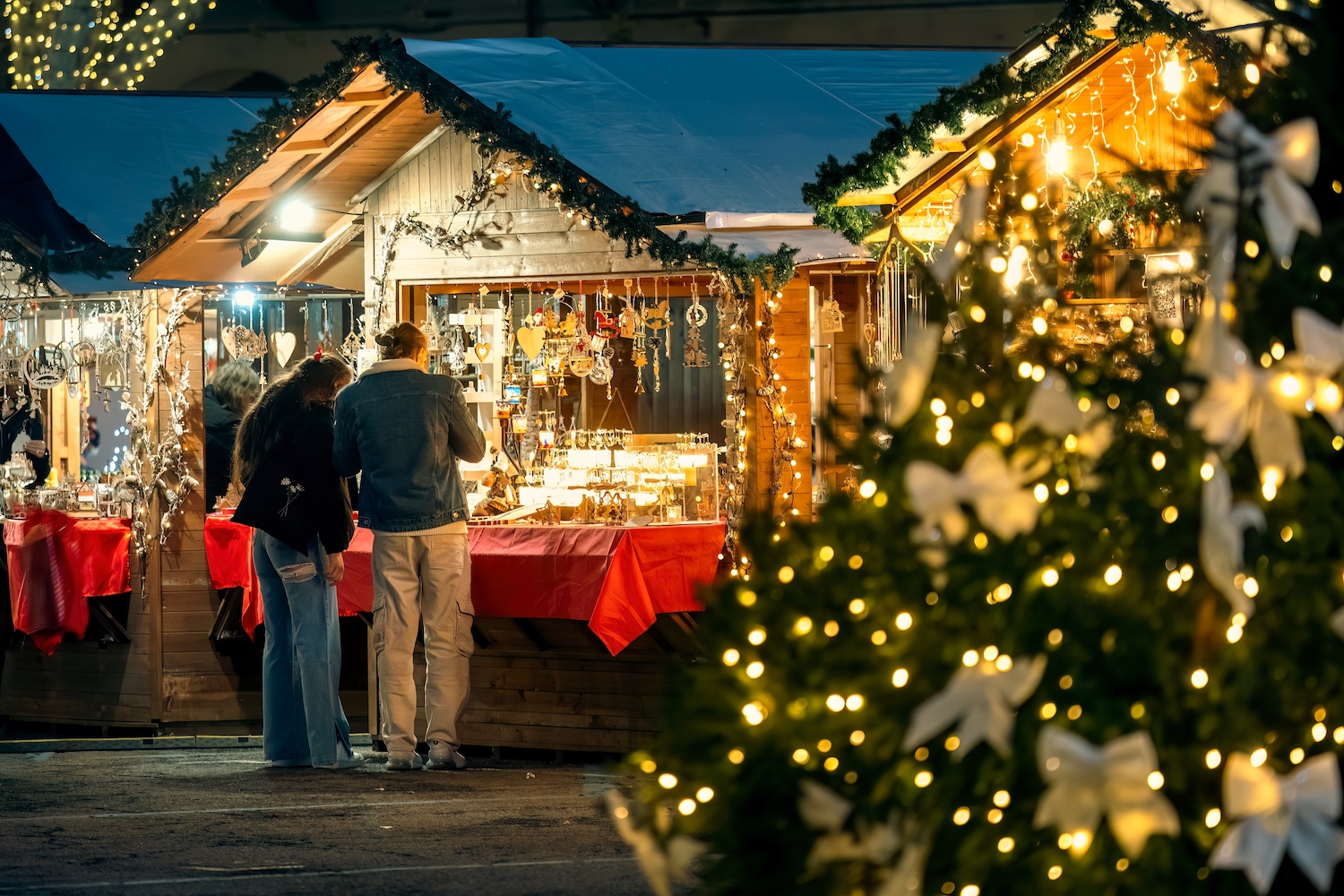
Christmas market in Asti, Italy
Winter: The Comfort of Tradition
When snow dusts the Alps and fog veils the Po Valley, Piedmont turns inward. Fires burn in hearths, and kitchens fill with the scent of simmering stock and melting cheese. It’s the season for hearty dishes: risotto al Barolo, rich with the region’s ruby-red wine; agnolotti del plin stuffed with spinach, cabbage and herbs; and polenta concia, layers of cornmeal and cheese baked until bubbling.
In Moncalvo, December brings the Fiera del Bue Grasso, or “Fat Ox Fair,” a centuries-old celebration of Piedmont’s prized cattle breeds, featuring parades, oxen decorated in ribbons and steaming bowls of bollito misto, a traditional stew. This is also the time for Toma, Castelmagno and Raschera cheeses, their flavors deepened by months of aging in cool stone cellars.
Around Christmas, bakeries fill with torroni (nougat), panettone di Torino and baci di dama—almond-hazelnut cookies sandwiched with chocolate. Mugs of thick hot chocolate, sold at Piedmont’s Christmas markets, remind you that Turin was once Europe’s chocolate capital. During New Year celebrations, Piedmontese families serve zabaglione, a warm custard of egg yolks and Marsala wine, while fireworks light the snowy peaks. Winter in Piedmont is a study in warmth: wool scarves, candlelight and food that sustains both body and spirit.
Signature Events: Where Food Becomes Culture
While village sagre are intimate and seasonal, Piedmont also hosts world-renowned events celebrating its culinary heritage.
Every two years, the town of Bra—birthplace of the Slow Food movement—hosts the Cheese Festival, a gathering of cheesemakers from across the world. Streets overflow with wheels of Parmigiano, crumbly goat cheeses and pungent blues, while aging rooms open their doors to visitors.
In Turin, the Terra Madre Salone del Gusto brings together farmers, artisans and activists in one of the world’s most important fairs dedicated to sustainable gastronomy. Here, Piedmont’s philosophy comes full circle: food not as luxury, but as livelihood, culture and connection.

Neive village, Piedmont, Italy
Living by the Seasons
Piedmont’s festivals mirror the rhythm of its land: the bloom of spring, the fullness of summer, the bounty of autumn, the stillness of winter. Each season invites you to taste, listen and linger—to join the table rather than rush past it.
Step directly into this seasonal rhythm on Italy’s Piedmont: The Art of Slow Living adventure—sharing meals with local families, learning traditional recipes from regional chefs and tasting the wines and truffles that define Piedmont’s heritage. Here, Slow Food is more than a movement—it’s a way of life, and every meal tells a story of the land that inspired it.






